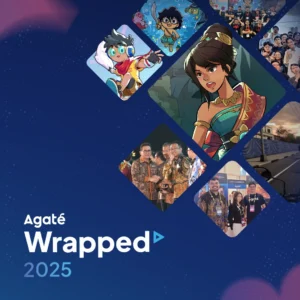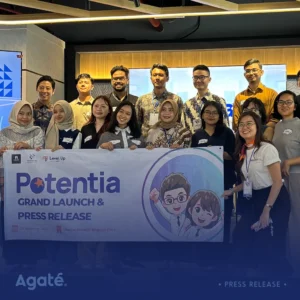
The video game industry has solidified its position as a dominant force, generating revenue that surpasses the combined earnings of the music and film industries. While creating a captivating experience remains essential, a game’s success also hinges on its financial viability. This is where a well-defined business model comes into play. This framework serves as a roadmap for generating revenue and transforming your game concept into a commercially successful product.
These are various business models within the game industry:
One-Time Purchase
This model is ideal for delivering a complete and polished gaming experience, often featuring a rich narrative arc, intricate world design, and engaging gameplay. With a single upfront cost, players gain access to the entire game, fostering a sense of ownership and accomplishment upon completion. This approach is particularly well-suited for single-player experiences or games with a well-defined storyline.
Freemium
The freemium model offers the core game for free, enticing a wider audience to download and try it out. This allows players to experience the core gameplay loop and mechanics firsthand, fostering a sense of investment before they decide to spend money. However, careful consideration needs to be applied when introducing optional in-app purchases. These purchases should enhance the core experience without giving players who spend money an unfair advantage over those who don’t. This can be achieved by offering cosmetic items that alter a character’s appearance or additional content that expands the game’s world or story without impacting core mechanics or difficulty. Striking this balance is crucial for maintaining a positive player experience and fostering a loyal player base willing to invest in the game.
Subscription Service
The subscription model thrives with games that offer a constantly evolving experience, with ongoing development that introduces new content, features, or storylines on a regular basis. This approach is popular with massively multiplayer online (MMO) games, where players inhabit a persistent virtual world that continues to grow and change over time. Subscription fees provide a steady revenue stream that allows developers to continually invest in new content and updates, ensuring that players have a reason to return and keep playing. This model can also be effective for single-player games with episodic content, where players receive access to new story chapters or levels as part of their subscription.
Strategic Advertising
Non-intrusive ads, carefully integrated within the gameplay environment, can provide a steady revenue stream without sacrificing the player experience. The key lies in respecting player time and attention. This means avoiding disruptive pop-up ads or excessive video ads that interrupt the flow of gameplay. Instead, consider implementing rewarded ads that players can voluntarily choose to watch in exchange for in-game rewards, such as virtual currency, power-ups, or cosmetic items. Another approach is to partner with relevant brands to incorporate subtle product placements within the game world. For instance, a racing game could feature billboards with real-world car brands, or a sports game could include advertisements for athletic apparel companies. When done thoughtfully, these integrated ads can enhance the game’s realism and provide a more immersive experience for players while still generating revenue for the developers.
In-Game Marketplace
Create a virtual marketplace where players can buy and sell items using an in-game currency. This fosters a sense of community and encourages player engagement in several ways. Players can collaborate to acquire rare or powerful items, bargain and negotiate for the best deals, and showcase their unique collections or customized characters. This marketplace can also extend the game’s lifespan by providing players with new goals to pursue and new ways to interact with each other. For example, an action role-playing game (RPG) might have a marketplace where players can buy and sell weapons, armor, and crafting materials. The in-game marketplace can be a dynamic and ever-evolving system, with new items and content being added regularly to keep players engaged.
The gaming industry thrives on innovation, constantly seeking new ways to engage players and generate revenue. As the world of cryptocurrency continues to evolve, so too do the business models employed within games.
Play-to-Earn
This model incentivizes players by rewarding them with cryptocurrencies or NFTs (non-fungible tokens) for completing tasks or emerging victorious in matches. This creates a unique economic ecosystem within the game itself. Players can earn valuable digital assets through their dedication and skill, potentially holding or trading them for real-world value. This approach fosters a deeper level of engagement, as players are not just passively consuming the game but actively contributing to its internal economy. However, it’s crucial to ensure a balanced experience where enjoyment and fair competition remain paramount.
Choosing the Right Model for Your Game
Choosing the optimal business model for your game requires careful consideration of several key factors. Here’s a breakdown of how these factors can influence your decision:
Play-to-Earn
One-time purchases offer upfront revenue, allowing you to reinvest those funds into future projects or expansions for the same game. It’s important to price the game competitively to ensure strong sales and a healthy return on investment Freemium models, on the other hand, offer more flexibility, allowing you to spread the development burden over time through in-app purchases.
Player Engagement
Freemium and subscription models are designed to keep players coming back for more. You need to provide a steady stream of new content, features, or challenges that entice players to return regularly and invest more time into your game. In contrast, one-time purchases are ideal for games that deliver a focused and complete narrative experience. These games provide a satisfying conclusion upon completion, leaving players with a sense of accomplishment and closure.
Long-Term Revenue
Subscriptions and in-game marketplaces are designed to generate a consistent stream of revenue over time. This allows developers to reinvest those funds into ongoing development efforts, ensuring a steady flow of new content, features, and updates to keep players engaged and coming back for more. This approach fosters a thriving in-game economy and a loyal player base.
Crafting Your Winning Strategy with Agate
Developing a sustainable business model for your game requires careful planning and expert guidance. At Agate, we offer comprehensive game development services, including helping you choose the ideal monetization strategy for your project, especially if your target audience is in the Southeast Asian region. Our team of industry experts will help you navigate the complexities of the market and ensure your game achieves critical acclaim and financial success.
Ready to take your game from concept to commercial triumph? Contact us today, and let’s collaborate on a winning business model for your game!
Do you want to turn your ideas or existing IP into a fully developed video game with proper game testing?
Look no further than Agate!
Don’t hesitate to get in touch with us today and learn more about how we can help you take your project to exceptional heights.







